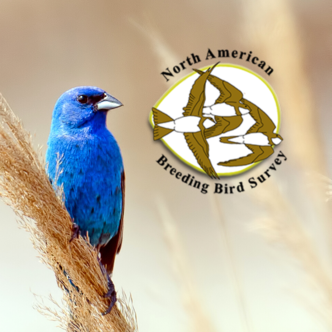
In 2019, a study released in the journal “Science” reported that we have lost 3 billion North American birds, or one in four individuals, in the past 50 years. While this is heartbreaking news, without studies such as this, we wouldn’t have the information we need to focus our future conservation efforts and take action to help bird populations.
Research at this scale can’t be done without immense amounts of data. Luckily we have a wealth of knowledge to draw on, collected by scientists and birders alike for decades. The first Christmas bird count was held in December of 1900, with just 27 birders at 25 locations across the U.S. and Canada. Since then the count has grown to a whopping 81,601 total observers across 2,646 locations. Since 2002, birders have been contributing sightings to the eBird database year-round, with over 55 million checklists submitted to date by users around the world.
One other important source of information is the North American Breeding Bird Survey (BBS). In the 1960s, amid growing concern after the revelation that DDT and other pesticides were harming the environment, U.S. Fish and Wildlife Service biologist Chandler Robbins established the program to monitor bird populations during the peak of the breeding season. Each survey, conducted along a set route, records all species present at established points every half-mile. In its first year, scientists and volunteers conducted nearly 600 roadside surveys in the eastern U.S.; today, that number has grown to approximately 3,000 routes surveyed every year across all North America! Last year, the pandemic led organizers to cancel the survey for the first time in over 50 years – but the 2021 count is on, and birders across the continent are ready to hit the road.
Monitoring the same roadside stops every single year has an advantage for researchers, who can make direct comparisons between the data from year to year. Every year, BBS data is used heavily in the “State of the Birds” report and over 500 scientific publications have used the data extensively.
The insights we can gain from citizen science monitoring projects, such as the BBS, Christmas Bird Count and eBird, are invaluable to the future of bird conservation. Without the generous time and effort of birders across the globe we would lack the information to identify bird declines and focus conservation efforts on species and habitats most in need. As more and more birders take up the hobby and become dedicated citizen scientists, the future for birds starts to look a lot brighter.
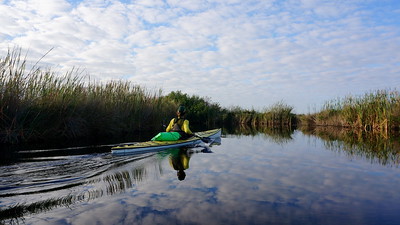
The Office of Greenways and Trails is looking for your input about recreation in Florida! They have developed a 5-10 minute survey to better understand how the pandemic has influenced how we recreate outdoors in Florida. Whether you live in Florida or have visited Florida in the past year, your responses to this survey will help determine the future goals and needs of recreation across the state. Click the correct survey that fits you below:
Florida Resident
Out-of-state Visitor
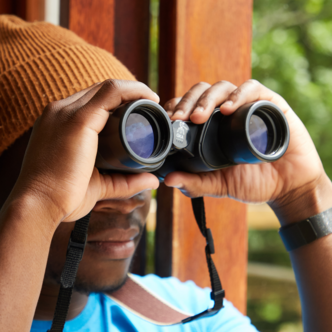
One of the biggest investments any new birder makes in their hobby is a pair of binoculars – but navigating the dizzying array of options can be daunting. With such a wide range in prices and lots of confusing specs, it’s hard to know where to begin! Read on for our quickstart guide to optics and a few tips to get started with a new pair.
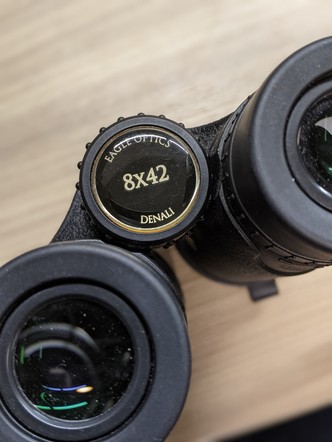
Magnification
Binoculars come in a wide range of magnification, but you’ll most often see them with 8x or 10x power. It might seem like bigger is better in this case, but there are some advantages to lower magnification pairs. While a higher magnification will help you see more detail, it also reduces your field of view. This can make it harder to find and focus on a fast-flitting bird and amplifies any shakiness. Imagine trying to find a warbler hopping from branch to branch while birding from a canoe, and you’ll realize how higher magnification might make birding trickier in some cases.
Objective Lens Diameter
Magnification is relatively straightforward, but the second number used to describe binoculars is more of a head-scratcher. In a spec like 8x42, the 42 refers to objective lens diameter, or the size of the lens on the front of the binoculars. Why does this matter? Larger objective lenses let in more light. The more light allowed in, the brighter and clearer the image will be.
Price
It seems mystifying that pairs of binoculars with similar specs can range anywhere in price from 30 to several thousand dollars. Do you need to shell out a small fortune to enjoy wildlife viewing? The difference in price is related to the quality of the optics inside, and while higher price tiers do offer a better viewing experience, there are plenty of pairs under $150 that will get you in the game. Check out Audubon’s handy guide to binoculars in every price range for more recommendations.
Other Considerations
Other features of binoculars you might want to consider are protective measures such as a rubber coating, waterproofing, or fog-proof lenses. All of these will help protect your binoculars from wear and tear on your adventures. If you’re a backyard birder watching from your porch, this might not be important to you, but otherwise these features will extend the longevity of your pair.
Try them out!
You can put your mind at ease about investing in a pair of binoculars you love by trying them out in the store or the field. Many outdoor retailers have models on display for you to take a peek through, and if you have friends or family who regularly use binoculars, you could ask to give them a spin – it’s also a great excuse to take a birding trip together!
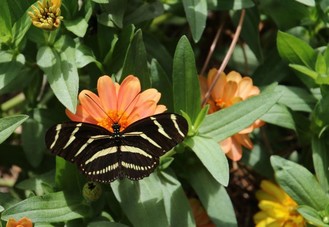 A zebra longwing sips nectar from one of the many beautiful blooms at Alfred B. Maclay Gardens State Park. Photo: FDEP
Address: 3540 Thomasville Road, Tallahassee FL 32309
Hours: 8 a.m. to sunset, daily
Phone: 850-487-4556
More widely known for its historic gardens, this park also offers native habitat great for birding. Try the brief trails along the lake at the Lake Hall Recreation Area for wintering Orange-crowned Warblers and Blue-headed Vireos. A few Dark-eyed Juncos can often be found around the large picnic pavilion in winter. For a longer hike, hit the Lake Overstreet multi-use trails. These are more rustic so be sure to pick up a map and bring water. A pair of Bald Eagles nest on Lake Overstreet so look out for them between December and May. Other species like Red-headed Woodpecker, Brown-headed Nuthatch, Great Horned Owl and Wild Turkey can also be found on the trails. Over 20 species of wood-warbler have been recorded during fall migration including Canada and Blackburnian. In fall, be sure to check the many Florida Dogwoods in the gardens as the fruit often attracts Rose-breasted Grosbeaks and Baltimore Orioles. White-breasted Nuthatches are common around the gardens and an Ash-throated Flycatcher was found near the Maclay House several years ago. The recreation area and gardens have wheelchair access. Loaner binoculars are available at the park entrance, ask the Ranger or call ahead for more information.
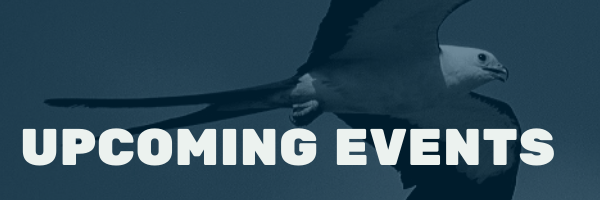
Upcoming Events
May 30 – Viera Wetlands Field Trip (Viera)
June 5 – Scrub Jay Trail Orientation (Clermont)
June 12 – BioBlitz Nature Walk (Clermont)
June 17 – Florida Native Nature Photography Contest Awards Program (Online)
Do you know about any other bird or wildlife-related events going on in Florida? Help spread the word by letting us know! Send in the times, dates, locations and contacts to WildlifeViewing@MyFWC.com for posting on the Great Florida Birding and Wildlife Trail website.
Events must be related to birds or other wildlife and must be open to the public. Examples include field trips, interpretive programming, webinars, summer camps and family programs.
|